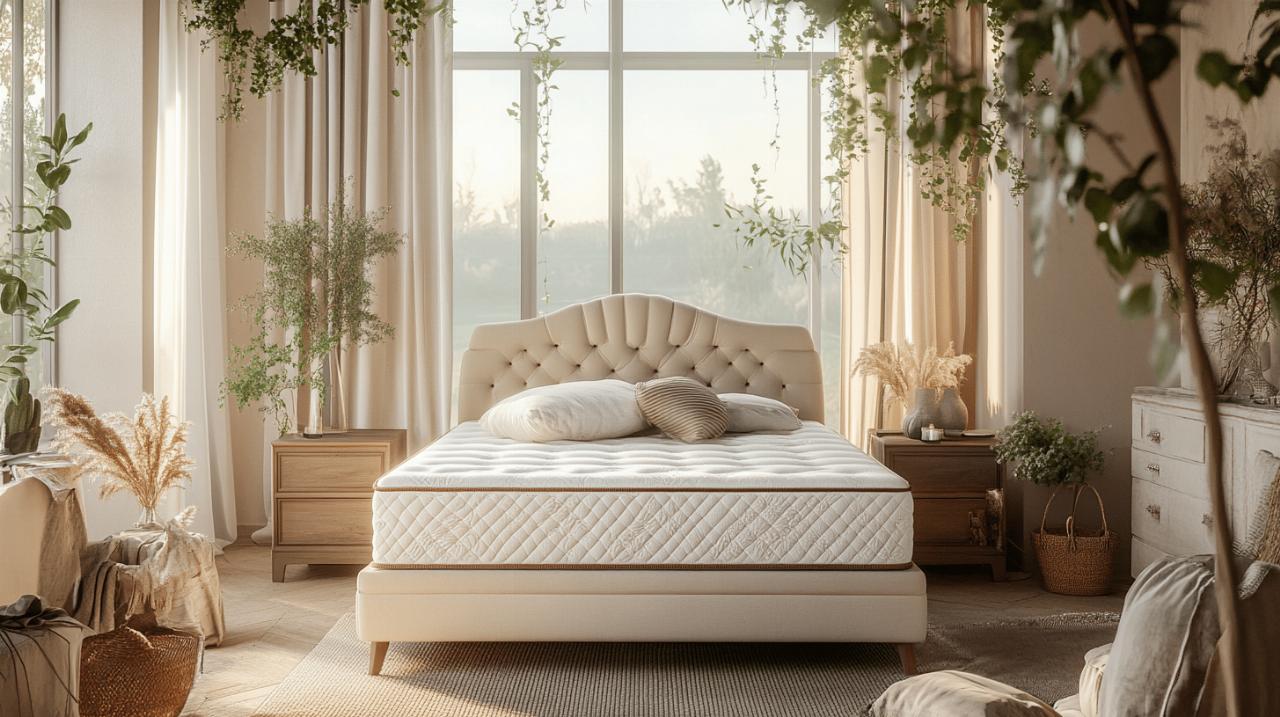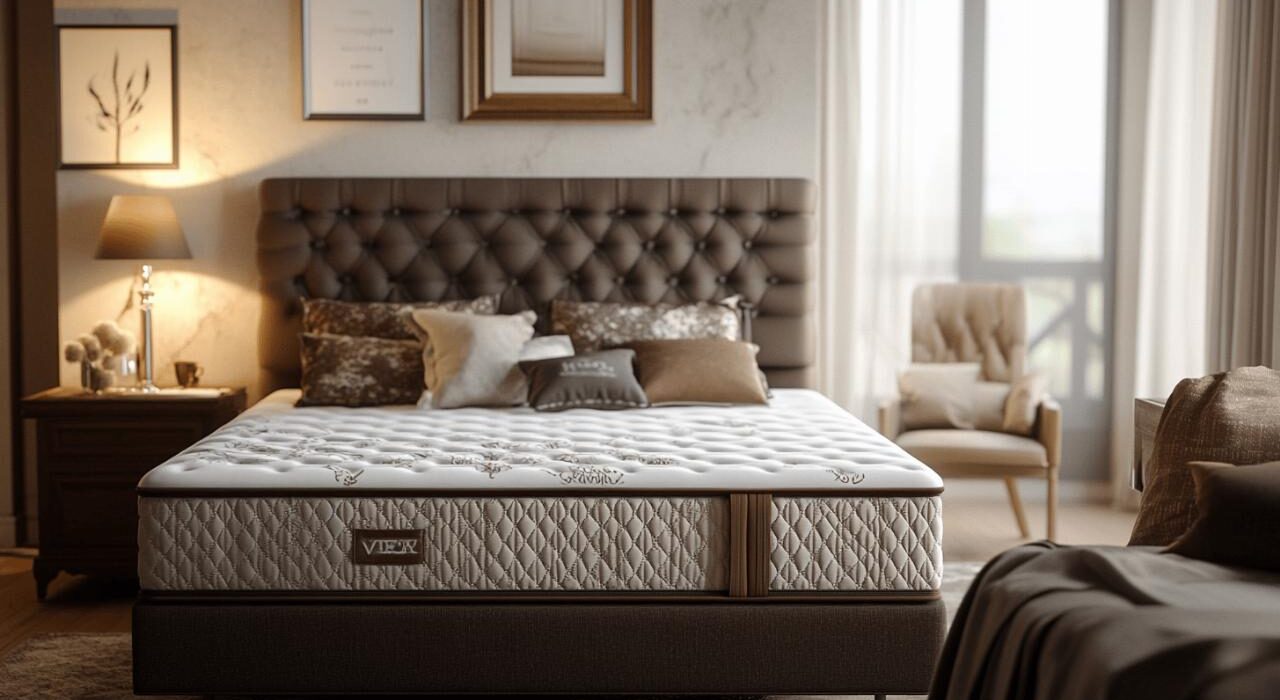Choosing the right mattress for your home is a decision that significantly impacts your sleep quality and overall well-being. With numerous options available in the market today, finding the perfect mattress can seem overwhelming. This comprehensive guide will walk you through the essential factors to consider when selecting a mattress that meets your specific needs and preferences. Casa Jedo brings you expert insights to help make this important decision easier and ensure you enjoy restful nights for years to come.
Understanding different mattress types
The foundation of your mattress search begins with understanding the various types available. Each mattress type offers distinct features that cater to different sleep needs and preferences. Knowing the characteristics of each can help narrow down your options considerably.
Memory Foam vs. Innerspring vs. Hybrid Options
Memory foam mattresses have gained popularity for their ability to contour to your body shape, providing excellent pressure relief. These mattresses respond to your body heat and weight, creating a customized sleeping surface that can alleviate aches and pains. However, traditional memory foam can trap heat, making it less ideal for hot sleepers. Innerspring mattresses, constructed with metal coils or springs, offer more bounce and airflow. Open coil or Bonnell systems, typically found in budget to mid-range options, feature interconnected springs that provide uniform support. For those who desire the benefits of both worlds, hybrid mattresses combine pocket springs with memory foam layers. This combination delivers balanced cushioning, support, breathability, and motion isolation, though these options tend to be heavier and more expensive, with models like the Otty Original Hybrid priced around £675 for a double.
Latex and adjustable air mattress benefits
Latex foam mattresses represent a premium option derived from rubber trees. They offer exceptional resilience, durability, and natural anti-microbial properties. The breathable nature of latex makes it ideal for those who tend to sleep hot, while its hypoallergenic qualities benefit allergy sufferers. However, these advantages come with a higher price tag. Adjustable air mattresses provide customizable firmness levels by allowing users to add or remove air according to their preferences. This makes them particularly suitable for couples with different comfort needs or individuals whose support requirements may change over time. Some specialized mattresses also incorporate gel layers with cooling and thermo-regulating properties to enhance sleep comfort.
Determining your ideal mattress firmness
Mattress firmness plays a crucial role in comfort and support, directly affecting how well you sleep and how you feel upon waking. Finding the right balance between softness and support is essential for maintaining proper spinal alignment during sleep.
Soft, medium, and firm mattress characteristics
Soft mattresses provide a plush, cushioning feel that allows you to sink slightly into the surface. They excel at contouring to your body and relieving pressure points, making them potentially suitable for side sleepers who need extra cushioning for shoulders and hips. Medium firmness mattresses strike a balance between support and comfort, accommodating a variety of sleeping positions and preferences. They offer enough give to relieve pressure while maintaining adequate support for spinal alignment. Firm mattresses provide robust support with minimal sinking. According to Simon Durrant from the Sleep Research Centre at the University of Lincoln, a mattress that is too soft makes maintaining good posture during sleep almost impossible, while one that is too firm can lead to awkward sleeping positions, soreness, and frequent waking.
Matching Firmness to Your Body Type and Weight
Your body type and weight significantly influence the ideal mattress firmness for your needs. Generally, petite individuals with lower body weight require softer mattresses since they exert less pressure on the sleeping surface. Without adequate softness, lighter sleepers may experience discomfort as they rest primarily on the mattress surface rather than sinking in enough for proper contouring. Conversely, individuals with higher body weight benefit from firmer mattresses that provide adequate support and prevent excessive sinking, which could lead to spinal misalignment. Medium to medium-firm options often work well for average-weight sleepers, offering a balanced combination of support and pressure relief. Some manufacturers now offer dual tension mattresses for couples with different firmness preferences, allowing each partner to enjoy their optimal comfort level.
Selecting the appropriate mattress size
The dimensions of your mattress can significantly impact your sleep quality and bedroom functionality. Choosing the right size involves considering both personal comfort needs and practical space constraints.
Standard Dimensions from Twin to California King
Mattress sizes range from compact single options to spacious king and California king models. Single or twin mattresses typically measure around 90cm x 190cm, providing adequate space for one person but limited movement room. Double mattresses, measuring approximately 135cm x 190cm, offer more space for individuals who prefer to spread out or limited space for couples. Queen or king size mattresses provide generous dimensions for couples, with king sizes measuring about 150cm x 200cm in the UK. The California king, slightly narrower but longer than standard king mattresses, caters specifically to taller individuals who need extra length. Understanding these standard dimensions helps you visualize how different mattress sizes will fit both your body and your bedroom space.
Room size considerations and partner compatibility
When selecting a mattress size, your bedroom dimensions play a crucial role. A mattress that overwhelms the room can create a cramped feeling and limit space for other furniture or movement around the bed. As a general rule, aim to maintain at least 60cm of clearance around three sides of the mattress for comfortable navigation. For couples, adequate space becomes even more important for undisturbed sleep. Research suggests that partners need sufficient individual space to change positions comfortably without disturbing each other. Motion isolation features become particularly valuable in shared beds, with pocket spring and memory foam designs excelling at minimizing movement transfer. Some couples with significantly different comfort preferences might even consider two smaller mattresses placed side by side within a larger frame as an alternative to dual tension options. At Casa Jedo, they prioritize both spatial harmony and sleep compatibility, offering tailored solutions that meet the needs of every bedroom and couple.
Evaluating mattress materials and construction
The materials and construction techniques used in a mattress directly influence its comfort, durability, and overall performance. Understanding these elements helps you make an informed decision based on quality rather than marketing claims.
Quality indicators and durability factors
Several indicators can help you assess mattress quality and potential longevity. For spring mattresses, higher coil counts generally indicate better support and durability, with premium pocket spring mattresses containing between 1,000 to 4,000 individually wrapped coils. The gauge of the wire used in springs also matters, with lower numbers indicating thicker, firmer wire. In foam mattresses, density ratings provide insight into quality and durability, with higher-density foams typically lasting longer. Construction details like side stitching, found in higher-quality mattresses, help maintain shape and edge support over time. The cover material, or ticking, should be tough and tear-resistant while offering comfort features. Premium covers might incorporate cotton or viscose yarns, while budget options typically use polyester or polypropylene. A warranty period of 10 years or more often signals manufacturer confidence in durability, making it a good indicator of expected lifespan. 
Cooling technologies and heat regulation features
Temperature regulation plays a vital role in sleep quality, with overheating being a common complaint, particularly with memory foam mattresses. Modern manufacturers have developed various cooling technologies to address this issue. Advanced mattress covers may incorporate moisture-wicking properties that draw heat away from the body. Some premium designs feature phase-change materials that absorb excess heat when you are too warm and release it when you cool down. Gel-infused foams help dissipate heat more effectively than traditional memory foam, while open-cell foam structures improve air circulation throughout the mattress. Natural materials like latex inherently offer better temperature regulation than synthetic alternatives. For those particularly sensitive to temperature issues, specialized cooling mattresses like ActiGel models are specifically designed to prevent overheating. When evaluating cooling claims, look for specific technologies rather than vague marketing terms to ensure genuine heat management benefits.
Accommodating your sleeping position
Your preferred sleeping position creates unique pressure points and support needs that your mattress should address. Understanding how different positions interact with mattress types can help you find your ideal match.
Side, back, and stomach sleeper requirements
Side sleeping, the most common position among UK sleepers, places significant pressure on shoulders and hips. These areas need sufficient cushioning to prevent pain and numbness, making softer to medium mattresses with good pressure relief ideal. Memory foam and hybrid options often excel for dedicated side sleepers. Back sleepers benefit from mattresses that maintain natural spinal alignment while supporting the lower back. Medium to medium-firm mattresses typically provide the right balance, preventing the hips from sinking too deeply while supporting the lumbar region. Pocket sprung mattresses with zoned support can be particularly effective for back sleepers. Stomach sleeping, while less common, creates unique challenges as it can strain the neck and lower back. Firmer mattresses help prevent excessive sinking of the midsection, which could otherwise create an unnatural spinal curve. However, the surface should still offer enough cushioning for comfort at pressure points like the chest and knees.
Combination sleeper solutions and pressure point relief
Many people change positions throughout the night, presenting a challenge when selecting a mattress. Combination sleepers benefit from responsive surfaces that facilitate easy movement while providing adequate support in multiple positions. Latex and certain hybrid designs offer the responsiveness needed without sacrificing comfort. Pressure point relief becomes particularly important for combination sleepers who may experience stress on different body areas throughout the night. Mattresses with progressive support, which respond differently to various pressure levels, can provide targeted relief while maintaining overall support. Some advanced designs offer zoned support that provides different firmness levels for different body regions, though it is worth noting that these zones may not perfectly align with everyone’s body shape. For those experiencing specific pressure-related discomfort, mattresses with specialized comfort layers can help distribute weight more evenly across the sleeping surface.
Budgeting for your mattress purchase
A quality mattress represents a significant investment in your health and wellbeing. Understanding pricing factors and warranty considerations helps ensure you get good value without compromising on essential features.
Price range expectations and value assessment
Mattress prices vary widely based on type, materials, and brand positioning. Budget options typically start around £200 for a double, but experts recommend spending a minimum of £500 for a double mattress that offers adequate quality and durability. Mid-range mattresses, priced between £500 and £1,000, often provide a good balance of quality and value for most sleepers. Premium models can exceed £1,000, incorporating advanced materials and construction techniques. When assessing value, consider cost per year of expected use rather than just the upfront price. A £600 mattress lasting six years costs £100 per year, while a £900 mattress lasting nine years offers better long-term value at the same annual cost. The innovative bed-in-a-box market has introduced competitive pricing with direct-to-consumer models, often offering quality mattresses at lower price points by eliminating retail markups. Some retailers offer interest-free credit options, making higher-quality options more accessible through monthly payments.
Warranty offerings and return policy considerations
The warranty period offers insight into expected durability and manufacturer confidence. Look for warranties of at least 10 years for quality mattresses, but pay attention to what exactly is covered. Most warranties cover manufacturing defects and excessive sagging beyond a specified depth, typically 1.5 to 2.5 cm. However, they rarely cover normal softening or comfort preferences. The bed-in-a-box sector has revolutionized the trial process, with companies offering home trial periods ranging from 100 to 365 nights. Nectar, for example, provides a generous 365-day trial for their memory foam mattress. These trials allow you to test the mattress in your actual sleeping environment rather than just a few minutes in a showroom. When considering trial periods, verify the return process details, including any return shipping costs or pickup arrangements. Also check if exchanges are permitted within the trial period should you wish to try a different model from the same manufacturer. Remember to inquire about old mattress removal and recycling options, which may cost around £40 through manufacturers but might be more affordable through local council services.












